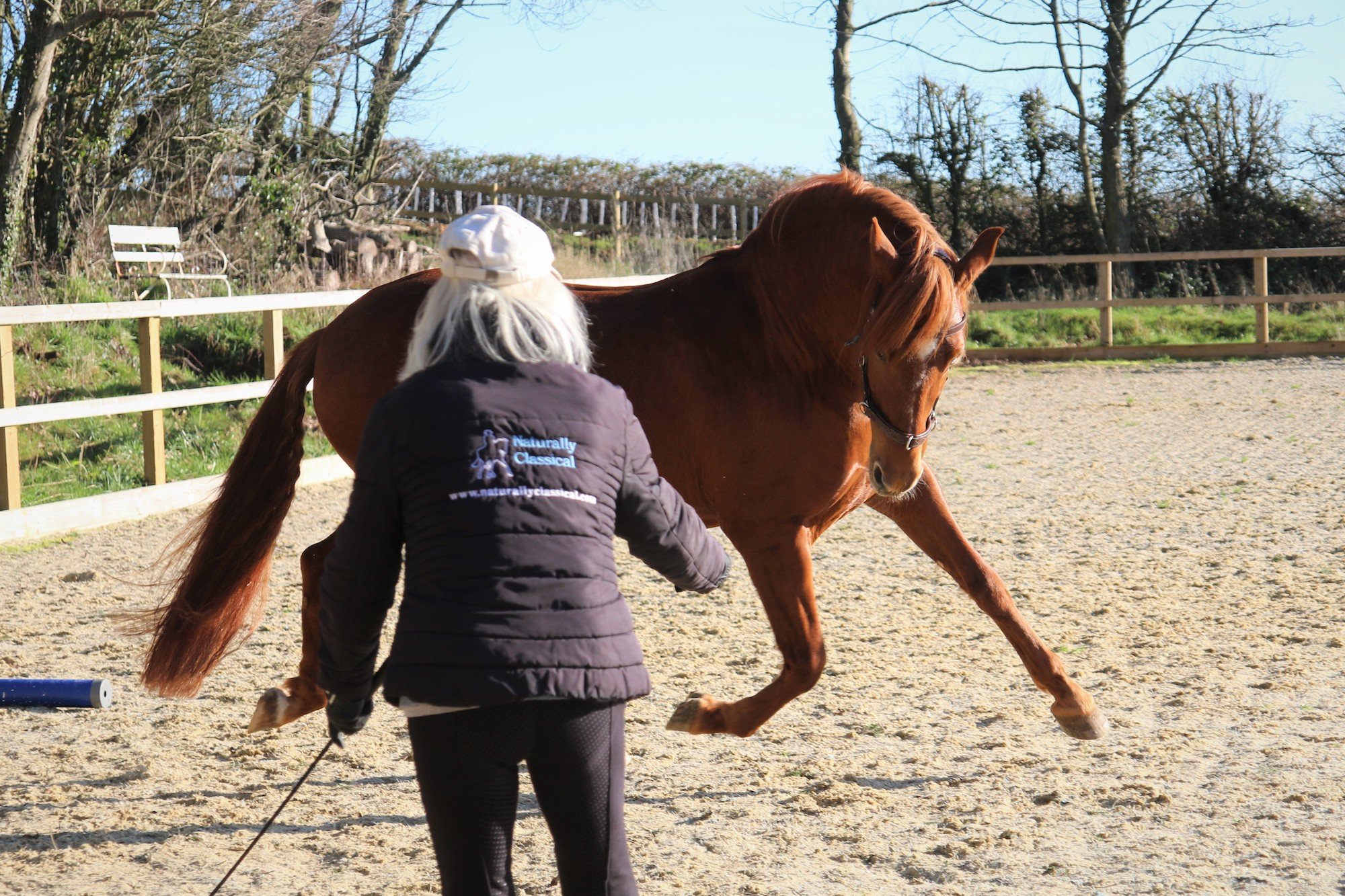MY THOUGHTS ON BITLESS BRIDLES
I have spent many years watching horses both ridden and under saddle – so here are just a few of my observations that may be helpful.
At liberty a tense horse will be tight in his jaw and only when he feels more confident and relaxed, will his mouth soften and relax, as his breathing becomes more steady and deep rather than shallow and restrictive.
Yet when under saddle I noticed that tense horses often open their mouths - and attempt to resist the contact. So why could this happen?
Well, relaxed horses at liberty look soft in their mouth which they may open a little whilst moving as there is no restriction.
When a ridden horse becomes tense in his mind it creates physical tightness which can be manifested within his neck head and jaw. This is when you will see the horse clenching his jaw, crashing his teeth against the bit as he changes from calm licking chewing with no resistance to a tight, clenched grabbing at a bit. This is an emotional reaction which we should not try to disguise.
The rider can prevent the horse from opening his mouth BUT this is only a superficial mask. The negative emotion which created the resistance can only be… will only become exacerbated as emotions of fear and anxiety are trapped.
The reasons for resistance can vary from heavy handed rider, memory flashbacks, pain, there can be numerous reasons but the modern answer has been to restrict this possibility by clamping a tight band around the jaw - so the natural responses are curbed.
This in itself creates more tension and natural fluid motion becomes extremely distorted often showing tightness through the spine and irregular movement through the limbs.
I have for many years ridden with no noseband and mostly using the snaffle bit but I have explored further - as with the breath-energy connection - looking for more possibilities.
This led me to working with various bitless bridles - and also with my students.
Bitless bridles in themselves are no more or less subtle than the educated hand of the rider.
The more educated rider will be looking to connect with centred body balance, lightness through the upper body, (self carriage) and a fluid seat enhanced by conscious breathing. This can allow the arms of the rider to listen and respond with lightness of hands and fingers.
The bitless bridle has the potential to enhance this feel but only if the bridle design offers a good balance of contact between the nose and the poll. Not every rider is interested to ride as a Classical rider, but some prefer to ride in a more relaxed posture rather than teaching the horse a system of Classical work to improve suppleness, core engagement and self carriage. The goals of Classical artistry are collection and lightness - synchrony between horse and rider.
Over time I have been looking to find with my GENTIL bitless bridle, a potential balance of contact between the nose and the poll. To facilitate this, it is essential for the cheek piece to be connected at the optimum angle, which is not too far forward when meeting with the noseband.
There is for every horse an optimal point of balance within this connection and it is important for us to understand how to fit the individual bitless bridle without too much nose pressure. If the connection is too far forward the rider is reaching out towards the front of the nose which can facilitate more resistance than if placed further back to enhance the poll release.
We are looking to encourage this release BUT if all the contact is towards the poll area this can create restrictions as the horse too easily over flexes. We are looking for a balance of contact which encourages relaxation from the poll and does not feel like a direct pull on the nose.
This balance helps the rider to find a more yielding feel with the horse, more akin to the relaxed jaw 'feeling' but without engaging with the very sensitive mouth.

